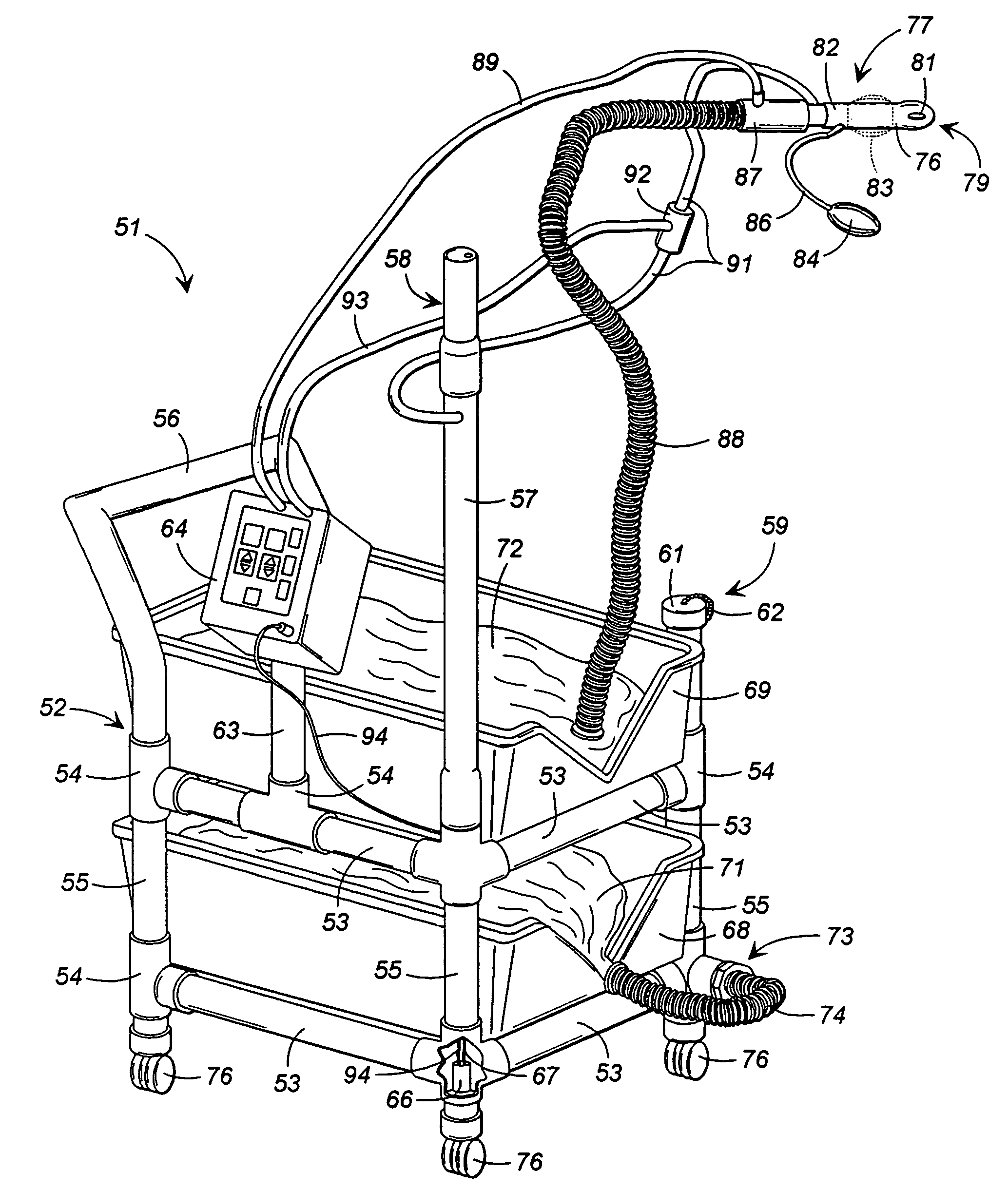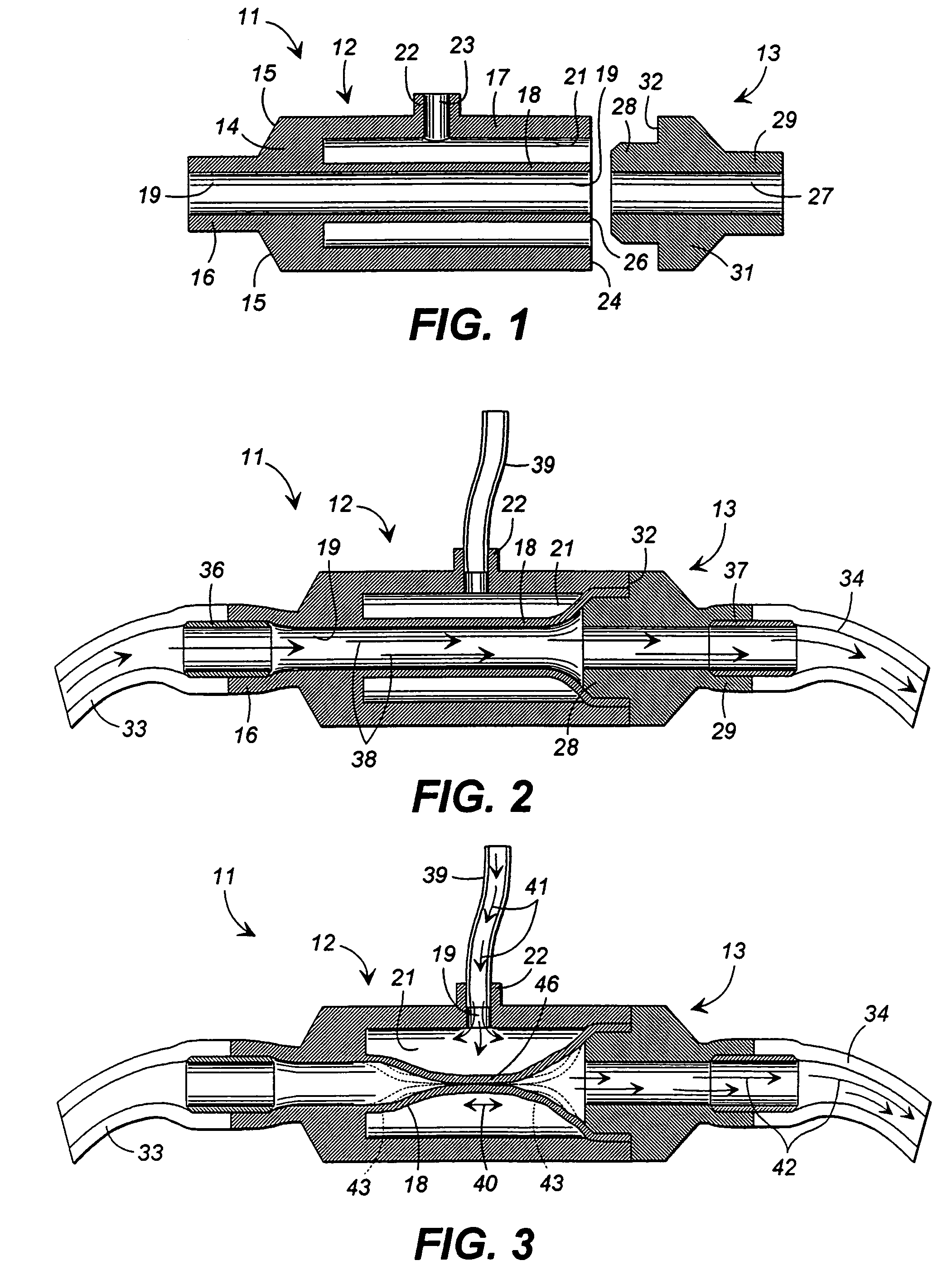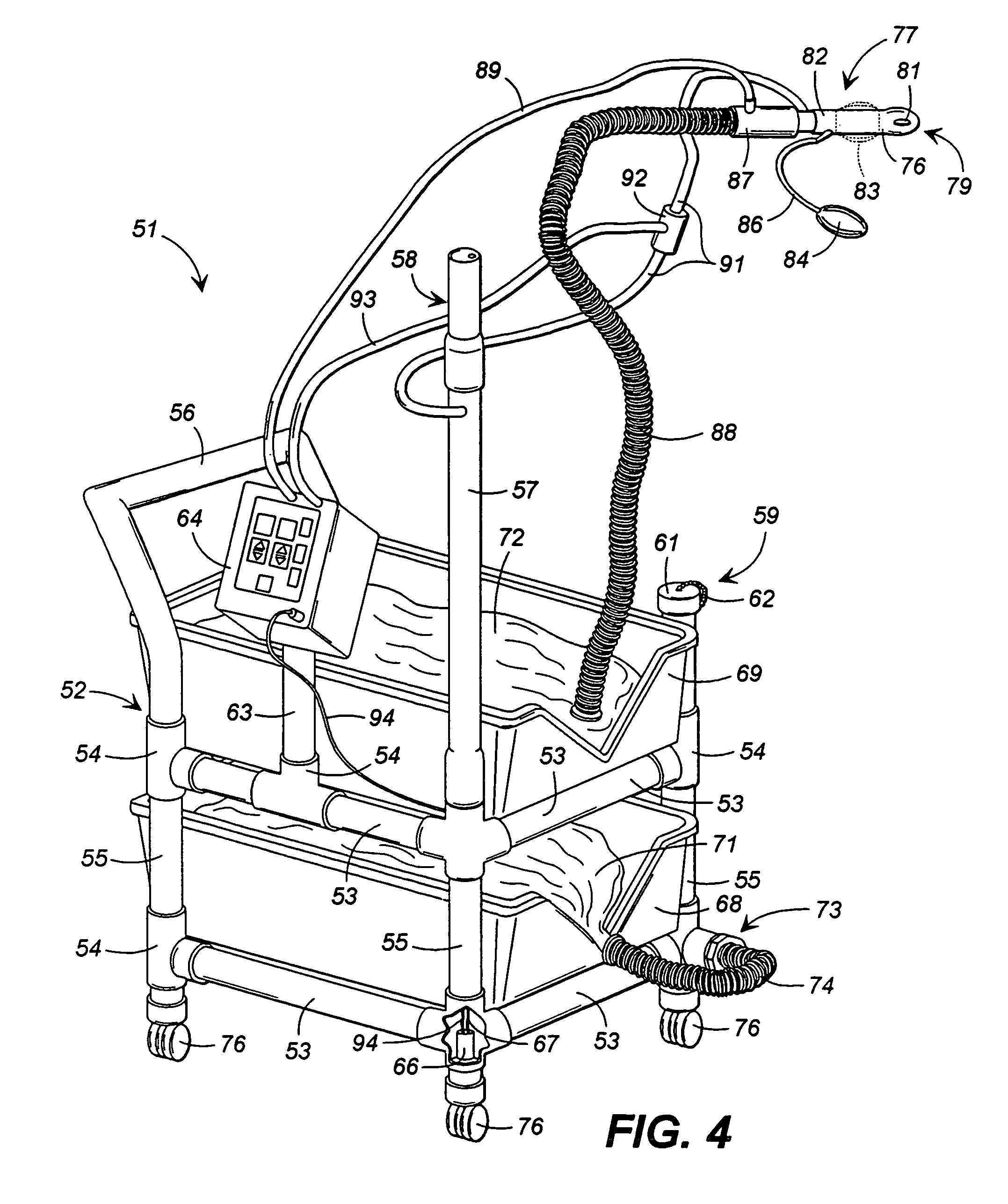Method and apparatus for delivering a colonic lavage
- Summary
- Abstract
- Description
- Claims
- Application Information
AI Technical Summary
Benefits of technology
Problems solved by technology
Method used
Image
Examples
Embodiment Construction
[0041]Referring now to the drawings, wherein like numerals refer to like parts throughout the several views, FIG. 1 illustrates in cross-section a sphincter valve assembly that embodies principles of the present invention in a preferred form. The sphincter valve assembly of FIGS. 1 through 4 are particularly suitable for use in the colonic lavage method and apparatus of this invention. The assembly 11 comprises two components, a main body 12 and an end cap 13. Both the main body 12 and the end cap 13 preferably are molded at the same time and in a common mold. Further, both components in the preferred embodiment are formed of a flexible somewhat rubber like material such as, for example, a silicone, a silicone rubber compound, or another synthetic rubber material. Latex materials can also be used, but they are not preferred for applications where the valve is likely to come into contact with a patient's skin because many patients have latex allergies. In any event, the material can ...
PUM
 Login to View More
Login to View More Abstract
Description
Claims
Application Information
 Login to View More
Login to View More - R&D
- Intellectual Property
- Life Sciences
- Materials
- Tech Scout
- Unparalleled Data Quality
- Higher Quality Content
- 60% Fewer Hallucinations
Browse by: Latest US Patents, China's latest patents, Technical Efficacy Thesaurus, Application Domain, Technology Topic, Popular Technical Reports.
© 2025 PatSnap. All rights reserved.Legal|Privacy policy|Modern Slavery Act Transparency Statement|Sitemap|About US| Contact US: help@patsnap.com



